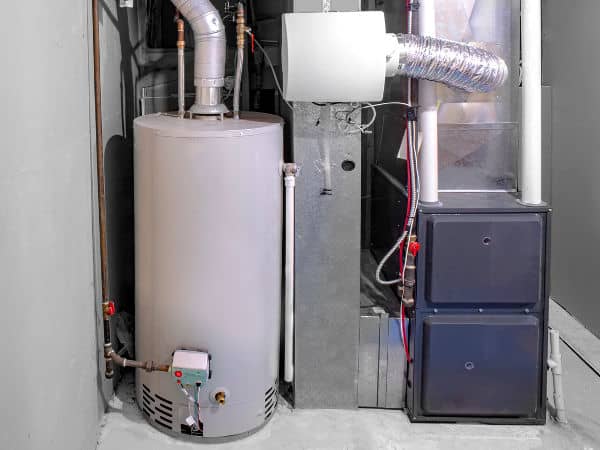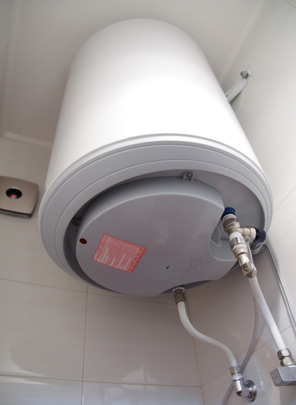Best Methods to Maintain Your Home's Hot Water System EffectivelyCaring for Your Home's Hot Water System: Important TipsSteps on How to Care for Your Home's Hot Water System Effectively
Best Methods to Maintain Your Home's Hot Water System EffectivelyCaring for Your Home's Hot Water System: Important TipsSteps on How to Care for Your Home's Hot Water System Effectively
Blog Article
What're your concepts on How to Maintain a Hot Water Heater in a Few Simple Steps?

Hot water is important for daily convenience, whether it's for a revitalizing shower or washing dishes. To ensure your hot water system runs efficiently and lasts longer, routine maintenance is crucial. This short article offers practical pointers and insights on exactly how to maintain your home's hot water system to prevent disturbances and pricey fixings.
Introduction
Maintaining your home's hot water system may appear daunting, but with a few easy steps, you can ensure it runs efficiently for several years ahead. This overview covers everything from understanding your hot water system to DIY maintenance ideas and understanding when to hire professional help.
Significance of Preserving Your Hot Water System
Routine maintenance not only prolongs the life expectancy of your hot water system but additionally guarantees it runs effectively. Overlooking maintenance can bring about lowered performance, higher energy costs, and also early failing of the system.
Indicators Your Hot Water System Requirements Maintenance
Knowing when your hot water system needs attention can prevent major concerns. Keep an eye out for indicators such as irregular water temperature level, odd noises from the heating unit, or rusty water.
Understanding Your Hot Water System
Prior to diving right into upkeep tasks, it's useful to understand the basic parts of your warm water system. Normally, this consists of the water heater itself, pipes, anode rods, and temperature level controls.
Month-to-month Maintenance Tasks
Regular monthly checks can aid capture minor issues before they rise.
Purging the Water Heater
Flushing your hot water heater eliminates sediment buildup, boosting performance and extending its life.
Checking and Changing Anode Rods
Anode poles avoid corrosion inside the container. Checking and replacing them when broken is important.
Examining and Adjusting Temperature Level Settings
Adjusting the temperature level settings ensures optimum performance and safety.
Do It Yourself Tips for Maintenance
You can perform numerous maintenance jobs on your own to keep your warm water system in top problem.
Looking for Leaks
Consistently evaluate pipes and links for leaks, as these can bring about water damages and higher costs.
Evaluating Stress Relief Valves
Checking the pressure relief valve guarantees it functions appropriately and avoids extreme pressure accumulation.
Insulating Pipelines
Insulating warm water pipes minimizes heat loss and can conserve energy.
When to Call an Expert
While DIY upkeep is helpful, some problems call for expert knowledge.
Complex Concerns Requiring Specialist Assistance
Examples consist of major leakages, electrical troubles, or if your hot water heater is consistently underperforming.
Regular Expert Upkeep Perks
Expert upkeep can include extensive examinations, tune-ups, and ensuring compliance with security criteria.
Conclusion
Routine maintenance of your home's warm water system is important for effectiveness, long life, and cost savings. By adhering to these tips and understanding when to look for specialist help, you can guarantee a trusted supply of warm water without unexpected interruptions.
Water Heater Maintenance: The Basics
Maintaining your water heater will ensure it operates efficiently and has a longer lifespan. Neglecting regular maintenance can lead to costly repairs and an even bigger chunk of your savings if you have to replace it sooner than necessary. But there’s good news: Most water heater maintenance tasks are relatively simple and easy for homeowners with basic DIY skills.
Flush the Water Heater
Over time, sediment and minerals can build up in the tank, reducing its efficiency and potentially causing damage. To flush the tank, turn off the power or gas supply, attach a hose to the drain valve near the bottom and open the valve to drain the water until it runs clear. Ideally, flush the tank annually.
Replace the Anode Rod
The anode rod is a sacrificial metal rod that helps prevent corrosion inside the tank. Inspect and replace it every three to five years or per the manufacturer's recommendation. To replace the anode rod, turn off the power or gas supply, drain a few gallons of water from the tank, unscrew the old rod and replace it with a new one. If the anode rod is significantly corroded or covered in calcium buildup, it's a sign the water heater may need to be replaced soon.
Tune-Up
A yearly tune-up can help identify potential issues and ensure your water heater operates at peak efficiency. This typically involves checking the thermostat, burner assembly (for gas heaters) and any other components specified by the manufacturer. During a tune-up, the technician may also clean the burner and adjust the pilot light (for gas heaters) or examine the heating elements (for electric heaters).
How to Maintain Your Water Heater
Insulate the tank. Insulating the tank can improve energy efficiency and reduce heat loss, saving you money on energy bills. You can purchase precut insulation blankets designed specifically for water heaters or use standard fiberglass insulation wrapped securely around the tank. Check the temperature. The recommended water temperature for most households is around 120 degrees Fahrenheit (49 degrees Celsius). Higher temperatures can increase energy costs and potentially cause scalding. Use a kitchen thermometer to check the temperature at the faucet nearest the water heater. Monitor water pressure. Excessive water pressure can strain the water heater and cause leaks or even tank failure. Install a pressure-reducing valve if necessary. The ideal water pressure range is between 60 and 70 PSI (pounds per square inch). Test the temperature and pressure (T&P) relief valve. The T&P relief valve is a safety feature that releases pressure if the tank gets too hot or the pressure builds up too high. Test it annually by lifting the lever and allowing a small amount of water to release. Replace the valve if it doesn't release water or reseal properly. Check for leaks. Regularly inspect the tank, pipes and fittings for leaks or corrosion. Deal with issues promptly to prevent further damage. Even a small leak can lead to significant water damage over time. Consider a tankless water heater. If your traditional tank-style water heater is nearing the end of its lifespan ( typically 10 years), consider replacing it with a tankless water heater. These units heat water on demand, reducing standby energy losses and potentially saving you money on your energy bills. Schedule professional maintenance. While homeowners can perform many water heater maintenance tasks, it's still a good idea to schedule professional maintenance every few years. A plumber or HVAC technician can thoroughly inspect the unit, identify potential issues and ensure it operates safely and efficiently. https://www.homeserve.com/en-us/blog/home-improvement/hot-water-heater-maintanence/

Hopefully you enjoyed our article about Water Heater Maintenance Tips You Can't Afford to Forget. Thank you so much for taking time to read our article post. In case you liked our blog post if you please remember to pass it around. Many thanks for your time. Don't hesitate to visit our site back soon.
Contact Us Now Report this page